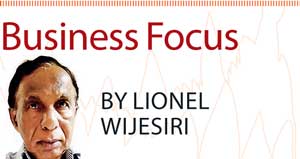05 Dec 2016 - {{hitsCtrl.values.hits}}

Every organisational strategy needs regular updating regardless of how successful you’ve been. It’s  simply not good enough to develop your strategy and put it on the shelf, expecting that it will work indefinitely.
simply not good enough to develop your strategy and put it on the shelf, expecting that it will work indefinitely.
Always be looking for and recording the factors that have changed since you crafted the last version of your plan. The business environment involves dynamics that are relentless and unpredictable and it’s better to be prepared for them by proactively renewing your strategy every year.
Here are three basics of the renewal process: rethink, reinvent
and reposition.
Rethink
The primary goal of this phase is to identify which parts of the business should be considered for renewal and which should not. For those businesses that are not selected for renewal, you should continue operations under the umbrella of continuous improvement.
Rethink consists of three parts: scan, size and select.
Scan
In scan you examine the outlook for your portfolio of offerings and quickly identify those that do not need renewal. By removing them from consideration you are able to focus more clearly on the remaining renewal candidates. Scan focuses on the trends that are changing customers and industries and looks forward as opposed to detailing exactly where you have been historically.
Size
Size places ballpark renewal values on each of the remaining parts of the portfolio. These will not be exact numbers. But even a back-of-the-envelope valuation will begin to identify potential opportunities for renewing parts of the business.
Select
Select takes this a step further and identifies the shortlist of potential renewal candidates. It takes into account the ballpark valuation you have done but it also factors in the probability of success, the difficulty of renewing the business and the urgency of the call to action if in the business.
We’ll discuss the details of this phase in the future.
Reinvention
Before moving to the next phase, reinvent, you must pass a key milestone. You must choose whether or not to invest the organisations top talent and resources in a renewal effort.
The shortlist you’ve compiled by scanning, sizing and selecting in rethink is the starting point but there is an enormous difference between having a list of possibilities and the reality of committing key decision-makers and workers to the process of renewal. Some of the questions you must address before committing to a renewal
process include:
How does the priority of this renewal effort compare to the priorities of other ongoing initiatives?
Who needs to be involved to make this a success and what is the cost of freeing up their time?
What else is happening on the corporate calendar—is now a good time for this effort, or would it best be done later?
We’ll cover the details of this choice in the future.
Reinvent
Reinvent is the second phase in the renewal process. Here’s where you do the heavy lifting, looking at both what could be done with the business and what should be done with it. Up to this point you have decided which parts of your business you are going to renew. Now you have to figure out how you’re going to renew them. Like rethink, reinvent has three parts: structure, stretch and screen.
Before you dive into reinventing your business you must be clear on the ground rules for the effort. Structure sets these ground rules and includes answers to such questions as:
What would success look like?
Who will be involved?
How much of their time will be spent on the effort?
What is included in the scope and what is excluded?
What assumptions are we making?
Structure will he covered fully in
the future.
Stretch is where the team considers and puts alternatives for renewal strategies on the table. Because organisations are designed to deliver what they promise, most alternatives are nor particularly audacious. But renewal demands bold choices.
After all, if the mild alternatives you have been using to improve the business were doing the trick you would not be in the middle of a renewal effort!
Choosing best renewal alternative
To determine which of the 10 renewal strategies are appropriate for your business, you’ll need to screen them. Whatever strategy you select, you must decide how well it is aligned with what your business needs. What actions would you take if you were to select this strategy? How would you tailor this strategy to fit your needs?
Screen continues down the list of 10 strategies until each has been evaluated against the needs of the business. Some will fit very well, some will be close enough to be interesting and others will be obvious non-starrers.
We will study in the future the detail needed to screen the strategies.
Once you have a shortlist of attractive renewal alternatives, it is time to choose the best one for your business. This will commit you to a course that will take a significant investment of time and money and that may take years to play out in the marketplace.
How will this decision be made? Who will make it? Flow will you avoid watering down the decision when trying to bring everyone on board? You must answer these questions before you choose your renewal path.
Making this choice requires evaluating all of the attributes of your alternatives. Certainly you will need to consider financial risk and return. But there are many other attributes you might also consider. What will it do for your strategic positioning against competitors? How will it affect your relationship with your customers? What are the short- and long-term implications of each alternative?
This topic will be discussed fully in the future.
Reposition
The third and final phase in the renewal process is reposition.
This is the phase in which you make the transition from your current business model to the new
business model.
Like the other two phases, reposition includes three parts: schedule, secure and switch.
Schedule lays out the tasks that need to happen in order to execute the transition to the new strategy. You will define milestones with associated due dates, accountabilities, authorities and responsibilities and also the sequencing of the tasks and their interrelationships.
Secure ensures you have allocated resources and that the right people have their time committed to successfully execute the strategy.
Switch makes the transition from the old business model to the new. In particular, this is where you manage the period in which both the legacy and the new business are in existence.
The legacy business will be wound down while the new business is ramped up. Clearly guiding this transition is critical for successfully executing your renewal strategy. How to handle reposition will be covered in the future.
Summary
Here is a summary of the renewal process:
Rethink – (1) Scan the portfolio for possibilities, (2) Size the potential value, (3) Select the shortlist.
Reinvent – (1) Structure the effort for success, (2) Stretch the team’s thinking, (3) Screen by applying the 12 strategies.
Reposition – (1) Schedule what needs to happen, (2) Secure what is needed for success, (3) Switch to the new
business model.
(Lionel Wijesiri is a retired corporate director counting three decades of senior management experience. He is now an independent consultant and a freelance journalist. He may be contacted on
[email protected])
10 Jan 2025 18 minute ago
10 Jan 2025 33 minute ago
10 Jan 2025 38 minute ago
10 Jan 2025 1 hours ago
10 Jan 2025 1 hours ago